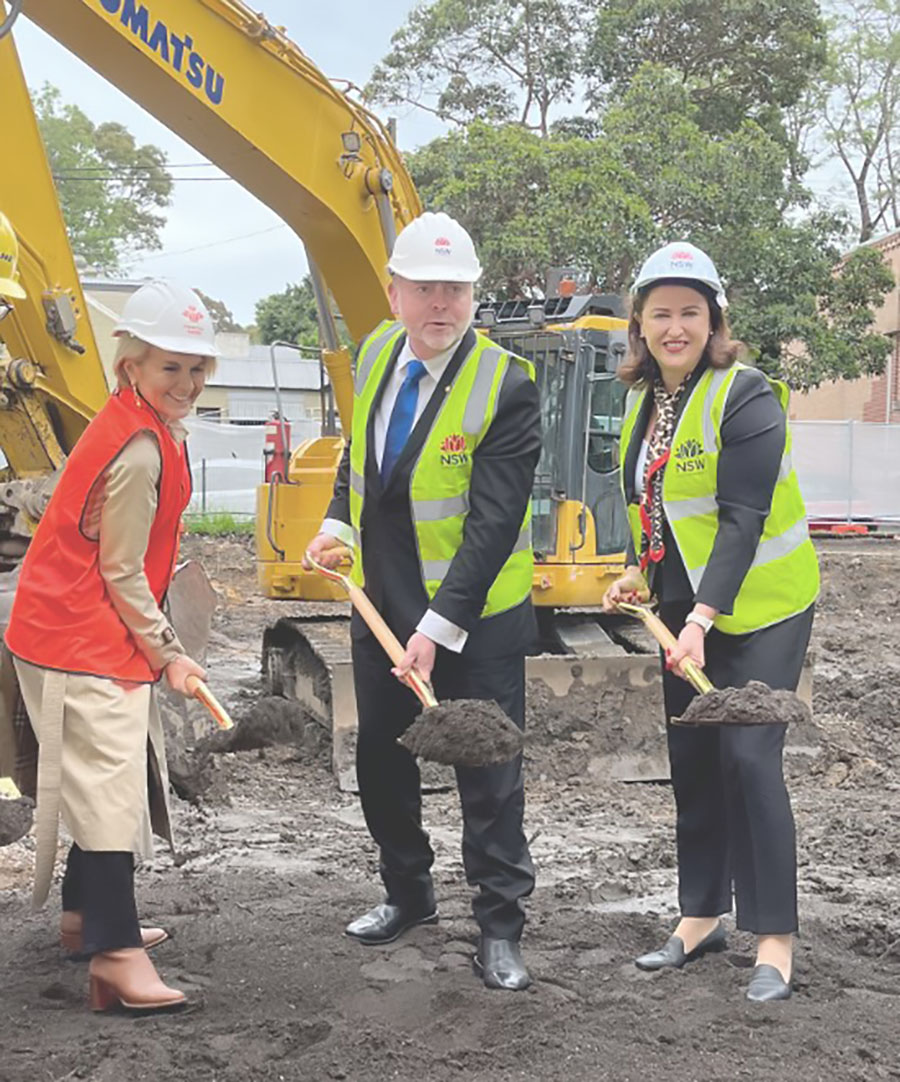By Ian Stephenson, Bulletin 3/2023, May 2023
The Society is heartened by the new government’s moratorium on the sale of historic houses owned by the NSW Land and Housing Corporation in the St Phillips’ and Lyndhurst estates. The church estates were purchased by the Federal government in 1974 with the express purpose of avoiding disruption to existing community networks, retaining the opportunity for individuals and families on low incomes to live close to the city and rehabilitating Glebe which had been identified as having the largest number of 1860s-70s cottages and terraces forming a continuous townscape in Australia.
People sometimes talk about urban conservation as though it is an esoteric luxury, not at the core of things. A bit like the way the study of art was viewed in schools 50 years ago – all very well in its own way but not a real subject like maths and physics.
Here in Glebe, conservation is about urban and social fabric – it is about both buildings and people. Our intact urban fabric, our legible topography which has not been buried by a mountain of high rise and our broad social demographic which has survived the gentrification of other inner-city suburbs, all within three kilometres from the CBD, is what makes us special. Unique is not too strong a word. To use a high falutin’ term, it is the gestalt of Glebe which makes this a great place to live.
Entering Glebe Point Rd from Broadway is like coming into a country town. There is a free-standing 19th century house, Montrose, less than 100 metres from Parramatta Rd, 19th-century terraces and Edwardian shops built in front of extant terraces, a few more mid-Victorian villas and even a house with a roof of timber shingles. We often take for granted what is around us. It’s good to reconnect, so why not, now that Autumn’s here, take a walk up Glebe Point Rd? As you perambulate, remember that Glebe is also about people so make sure to give a friendly hello to the folk you pass and take time to hear their stories.
There is a strong case – environmentally, socially, historically and economically – that better results can be achieved by refurbishing existing public housing in Glebe (both the 19th– century houses and the 1980s infill) and carefully designing some additional low-rise infill. The Society requested the previous government to:
- Make no more rezoning applications to increase the height limits of NSW Land and Housing Corporation sites in Glebe [as happened in Cowper St. The NSW Land and Housing Corporation’s current DA for 82 Wentworth Park Rd involves exceeding the existing height controls for the site]
- Respect Glebe’s heritage conservation areas
- Explore opportunities to add additional housing by low- rise infill designed to reflect the scale and character of Glebe.
The moratorium on the sale of the church estate’s houses shows the Minns’ government is listening. It’s time for a new, more sensitive and more rational approach.
The Prince’s Quarter Rides Again
Some members will recall the Prince’s Trust Australia’s involvement in the removal of 17-31 Cowper St and 2A-D Wentworth Park Rd from the St Phillips’ heritage conservation area in order that well-designed low-rise infill could be replaced by two eight-storey buildings.
It was an odd fit. The Prince’s Trust Australia was founded in 2013 by the former Prince of Wales (now King Charles III). It was intended to follow his principles of urbanism, which were designed to respect communities, including that:
- Developments must respect the land. They should not be intrusive; they should be designed to fit within the landscape they occupy.
- Scale is also key. Not only should buildings relate to human proportions, but they should also correspond to the scale of the other buildings and elements around them.
- Harmony – the playing together of all parts. The look of each building should be in tune with its neighbours.
- Density. Space is at a premium, but we do not have to resort to high-rise tower blocks which alienate and isolate.
The 1980s infill in Cowper St did all these good things; the spot rezoning and erection of eight-storey buildings does not. I wrote to both HRH the Prince of Wales and the Chair of the Prince’s Trust Australia, the Hon Julie Bishop, in 2020 expressing the Glebe Society’s concerns.
The new development is called the Prince’s Quarter. The Prince’s Trust Australia’s website described it as seeking to build a stronger community in Glebe that integrates social housing in an inclusive and equitable way and contributes positively to its established local context and identity. It effuses about how it is wonderful to be working with our fantastic project partners, Land and Housing Corporation and the NSW State Government.
Late last year Julie Bishop, the Chair of the Prince’s Trust Australia, turned the first sod of the development. Let’s make this the first and last high-rise intrusion into Glebe’s Heritage Conservation Areas. To my mind – in terms of respecting heritage and community – it’s a dog of a development so it’s not so much the Prince’s Quarter as King Charles’ Spaniel. (Although they are very nice dogs!)











One comment. Please add yours.
too cute x love what you are doing